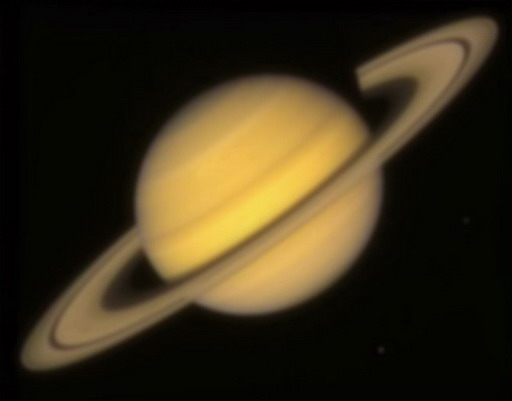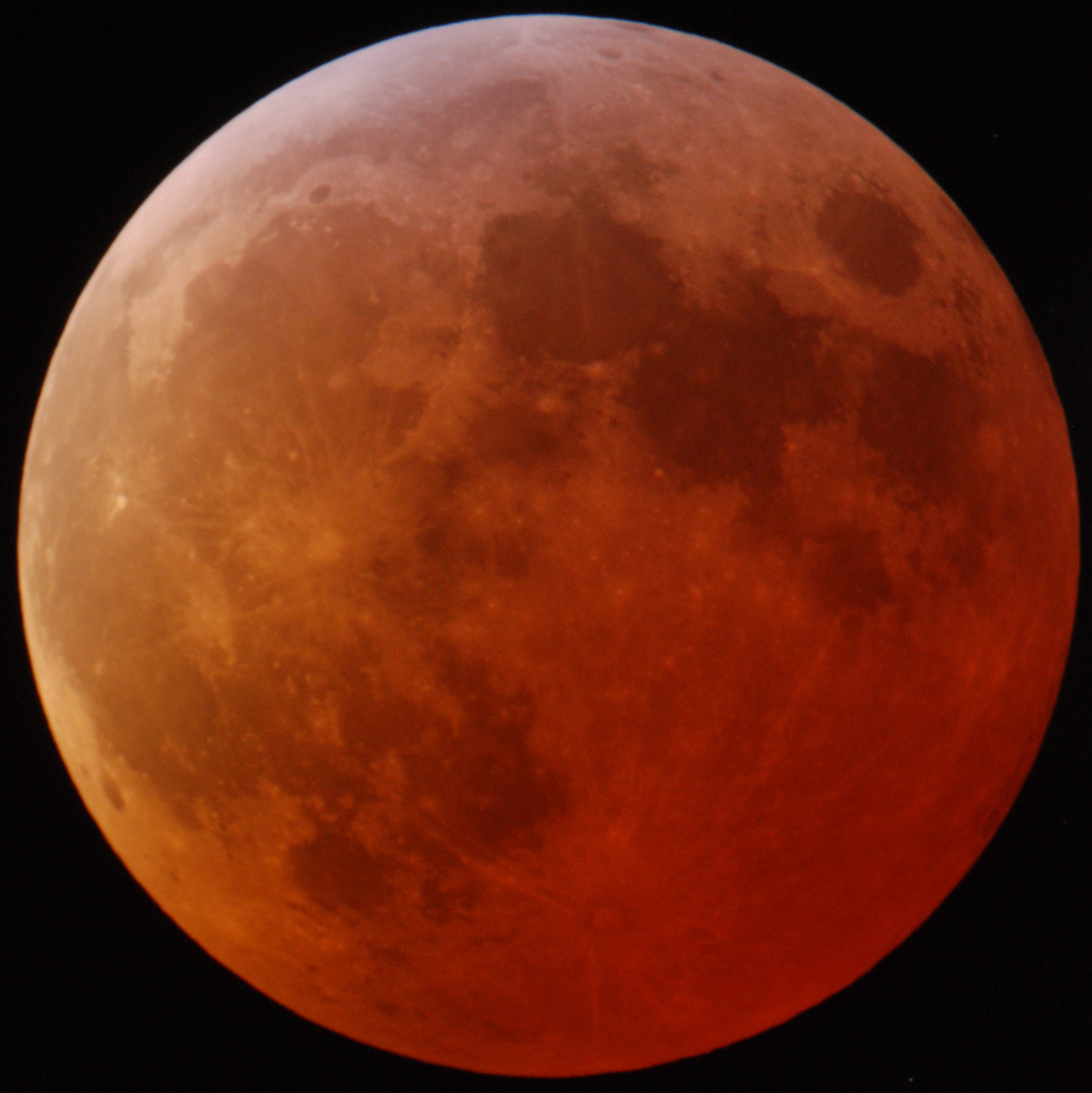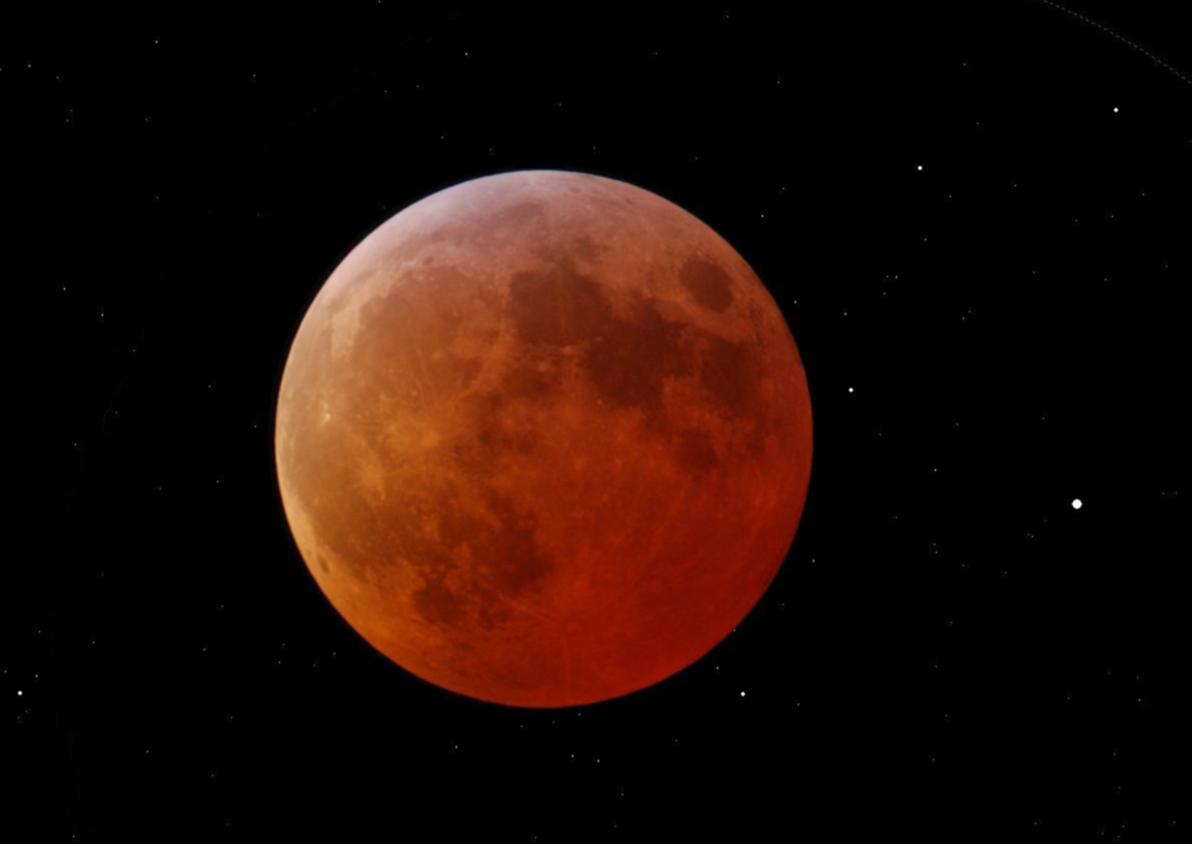Very bright, but quite featureless (unless imaged in UV).
This is the red channel from a stack of Venus images, which is the sharpest since red light suffers less from bad seeing.
14 arc seconds diameter
magnitude -4
phase: 77%
In an ideal world, a 512 pixel wide Saturn image would look like this:
But if an 8 inch telescope (like C8) would be used in perfect seeing, the resolution would be limited to (simulated with Aberrator):

For the 90 mm ETX90 it would look like:
A high pressure zone, little jetstream… seems like the perfect night. After thorough collimation and focussing the result still was not 100%: March 11th, 2300h.
Using my hoem grown registration/stacking in MatLab:
And another attempt at processing in Registax 4:
And another in Registax using all 4 movies made:
After the rain was gone, the sky was very clear. I was really pleased with the sight through the telescope: a soft “salmon red” colored moon with a white rim, embedded in bright white sparkling stars.
Taken at 00h29m25s CET, note the magnitude 10 star visible in the lower right.
ISO800, 10s, roughly f/10 (N6+2x Barlow)
This exposure time makes clear that the eclipsed moon is roughly 16000 times dimmer than the normal full moon. (Based on the “sunny 16″ rule: shutter time is equal to iso number @ f/16 for sun lit object, so at iso800 one would expect about 1/1600 second shutter time for f/10).
And a wider field of view, including the stars (added from HNSky) as they were visible through the telescope:

As seeing was not so good, I used the opportunity to image the moons of Saturn using the webcam at maximum sensitivity, while later adding Saturn itself, acquired at lower sensitivity. The moons and their respective magnitude are shown. Mimas (mag 12.8) was overshadowed by the blowout of Saturn and Hyperion was simply invisible (mag 14.1!). The sizes of the moons in the image nicely match their increasing magnitude. The Celestron C8 was used without Barlow in combination with the Philips Toucam.
The same view in HNSky: